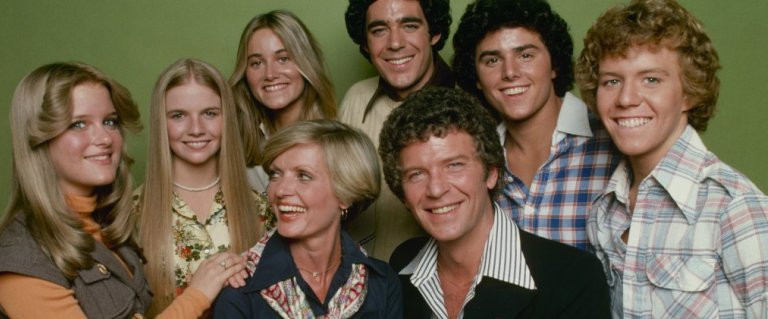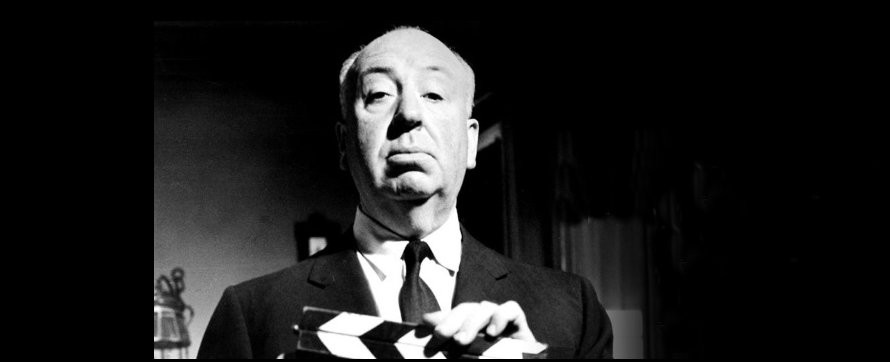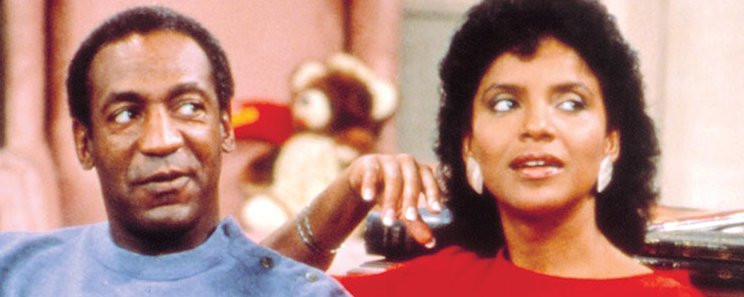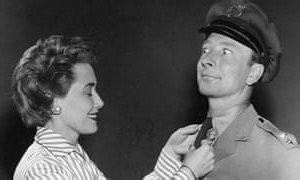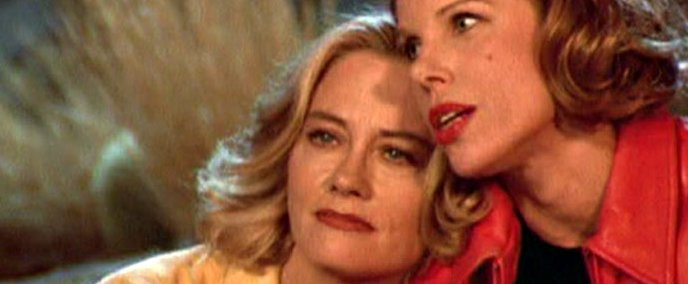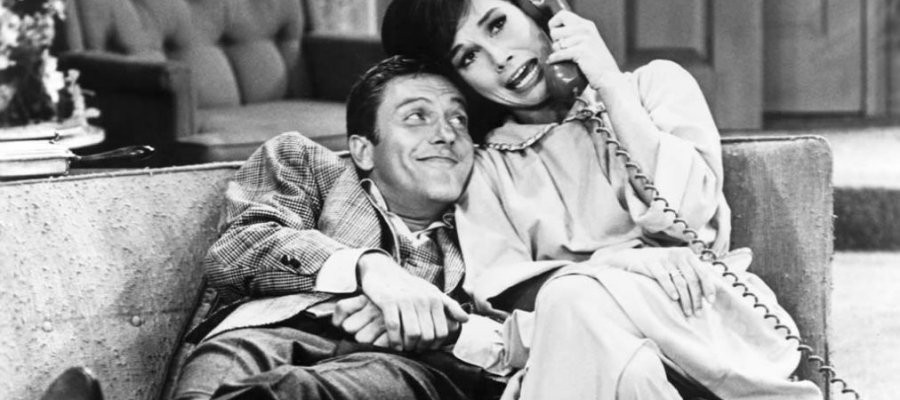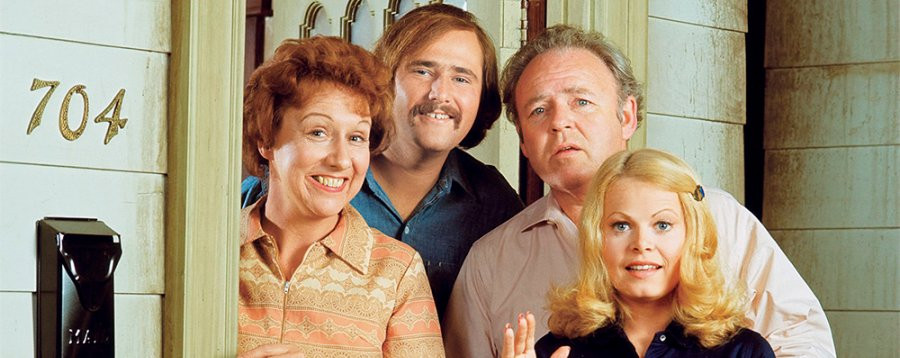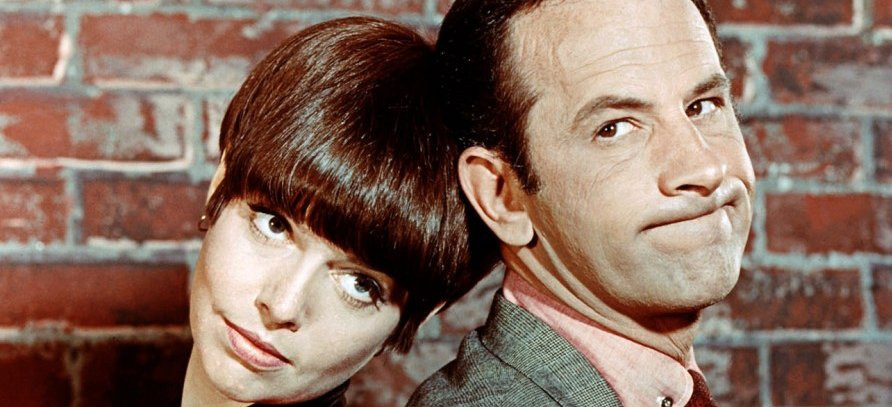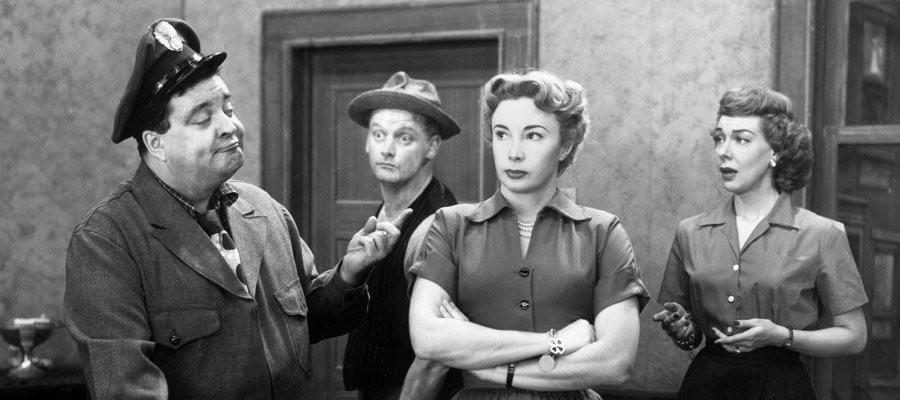
The Honeymooners
1955 - United StatesThe Honeymooners stands as one of the United States’ most fondly remembered television comedies - a true landmark in the development of the sitcom. Beginning life in the early 1950s as a series of short sketches on DuMont’s Cavalcade of Stars, it featured Jackie Gleason as the loud-mouthed, short-tempered New York City bus driver Ralph Kramden and Pert Kelton as his long-suffering wife, Alice. The sketches proved so popular that they transferred to The Jackie Gleason Show and eventually evolved into a full-length, twenty-five minute sitcom, which remarkably continues to air in reruns more than half a century later.
Shot live with minimal rehearsal (reportedly at Gleason’s insistence), the show was raw, immediate, and often unpredictable. Set almost entirely in a spartan Brooklyn flat at 328 Chauncey Street — complete with painted cardboard sets and the curious novelty of outward-opening doors — it found humour and humanity in the most confined of spaces. As Ralph's fiery exchanges with Alice (Audrey Meadows being recast in the series proper) reached a comedic boil each week, the show always brought its characters back from the brink with a final kiss-and-make-up moment, re-establishing the tender heart beneath the bluster.
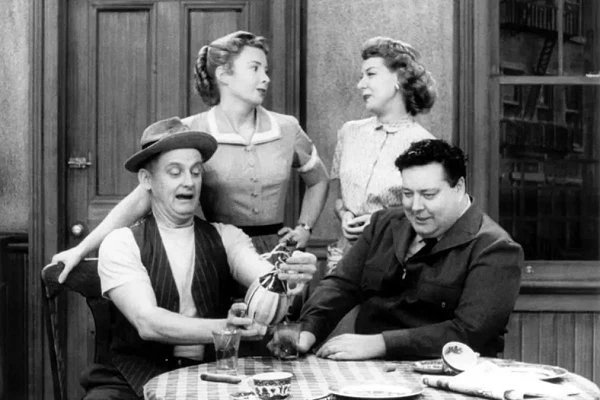
Upstairs lived Ralph’s best friend and unlikely confidant, Ed Norton (played with scene-stealing goofiness by Art Carney), a sewer worker with a flair for oddball charm. His wife Trixie (Joyce Randolph) rounded out the quartet. Together, the couples represented the American working class in all its struggles and triumphs — perpetually short on money but rich in dreams, tempers, and affection.
The show's success was meteoric. So confident were the network and advertisers in its appeal that The Buick Motor Company agreed a then-record $6 million sponsorship deal -an unprecedented figure for the time. Between 1949 and 1954, The Honeymooners became essential viewing across the United States. It was briefly revived in 1966 as part of Gleason’s variety specials, and in the 1980s, long-lost early sketches were unearthed in Gleason’s own basement and repackaged into a new series of half-hour episodes.
Its legacy is hard to overstate. Hanna-Barbera’s The Flintstones was a direct and unashamed homage, lifting the basic character dynamics and transposing them to the Stone Age. Fred and Wilma Flintstone were essentially Ralph and Alice in animal skins, with Barney Rubble playing the part of Ed Norton to prehistoric perfection.
Strangely, The Honeymooners never really caught on in Britain. ITV gave it a brief airing in 1958, and the BBC followed suit nearly thirty years later in 1987. It’s a curious oversight, as British audiences would surely have appreciated its blend of verbal sparring, heartfelt moments, and class-based comedy, elements that found later expression in UK favourites such as Till Death Us Do Part and Only Fools and Horses.
Gleason, whose real name was Herbert John Gleason, first made his mark on American television in Life of Riley back in 1949 and remained a revered figure until his death in 1987. Though The Honeymooners is very much a product of its time, it remains a masterclass in character-driven comedy. Brash, warm, and unflinchingly honest, it offered more than just laughs. Beneath its knockabout charm lay a thoughtful, often poignant commentary on the hopes and hardships of working-class life, making it not just a classic sitcom, but a piece of cultural history.
Seen this show? How do you rate it?
Seen this show? How do you rate it?
Published on December 21st, 2018. Written by Laurence Marcus for Television Heaven.


